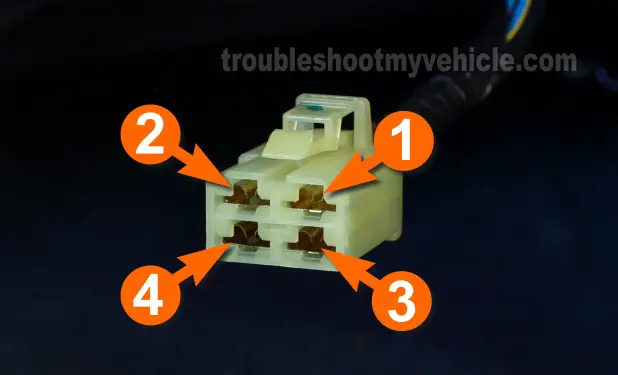
This tutorial will show you how to test the blower motor power transistor (also known as the blower motor resistor) in a step by step way.
You'll be surprised just how easy it is to test it and determine if it's bad (or not).
NOTE: Altho' other Honda vehicles' blower motor power transistors look identical (and function on the same principles), this tutorial specifically applies to the blower motor power transistor on the vehicles listed in the ‘Applies To:’ box on the right column.
IMPORTANT: You need to first make sure that the blower motor is OK before you start testing the blower motor power transistor on your Honda Civic. Why? This is due to the fact that the power transistor depends on the blower motor to function and starting your diagnostic with the power transistor, instead of the blower motor, could have you replacing parts your Honda doesn't need.
The following tutorial will help you test the blower motor in an easy step-by-step manner:
- How To Test The Blower Motor (2001-2005 1.7L Honda Civic).
- Blower Motor Relay Bench Test (2001-2005 1.7L Honda Civic).
Blower Motor Power Transistor Circuit Descriptions

The blower motor power transistor is commonly referred to as the blower motor resistor when in the true technical sense it isn't a resistor.
This is due to the fact that the blower motor power transistor does pretty much the exact same job as the old style resistors of vehicles of the 80 and 90's. What job?... Vary the blower motor fan speed.
| Blower Motor Power Transistor Circuit Descriptions 2001-2005 Civic EX, DX, LX |
||
|---|---|---|
| Pin | Wire Color | Description |
| 1 | BLU/YEL | Connects to heater control panel pin 8. Provides varying current to transistor base to increase or decrease fan motor speed. |
| 2 | BLK | Connects to chassis Ground. |
| 3 | BLU/RED | Connects to heater control panel pin #8. |
| 4 | BLU/BLK (or GRN/BLK) | Connects to blower motor connector pin #2. |
TEST 1: Testing The Blower Motor's Resistor

In this first test, we're gonna' check the resistance of the resistor inside the blower motor's power transistor with a multimeter in Ohms (Ω) mode.
If the resistance IS NOT within specification, we can conclude your Honda Civic's blower motor power transistor is bad and needs to replaced.
Now, if the resistance is within specification, then we need to continue on to the next test (which is testing the power transistor diode).
OK, to get this show on the road, here are the test steps:
- 1
Disconnect the blower motor resistor (power transistor) from its harness connector. The power transistor is located under the right side (passenger side) of the dash.
IMPORTANT: Before continuing on to the next steps, verify that your Honda Civic's ignition switch is in the Off position. - 2
Remove the power transistor from its location.
NOTE: Removing the glove box will help you gain better access to blower motor power transistor. - 3
Measure the resistance of the power transistor between pins #3 and #4 with your multimeter in Ohms mode.
Your multimeter should register of about 1.4K to 1.5K Ohms (1,400 to 1,500 Ohms).
Let's take a look at what your test results mean:
CASE 1: The multimeter indicated the indicated resistance values. So far so good, since this is the correct and expected test result.
Your next step is to do a diode test of pins #2 and #4. For this test go to: TEST 2: Testing The Power Transistor Diode.
CASE 2: The multimeter DID NOT register the indicated resistance values. This tells you that the blower motor resistor is fried and needs to be replaced.
Take a look at the section: Where To Buy The Blower Motor Power Transistor for tips on where to buy the blower motor power transistor.
